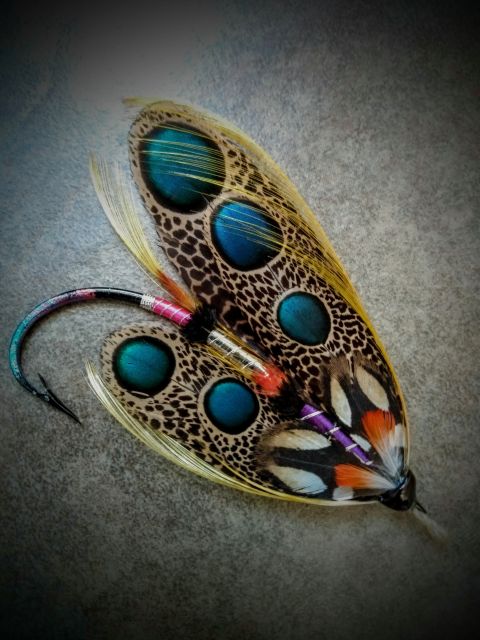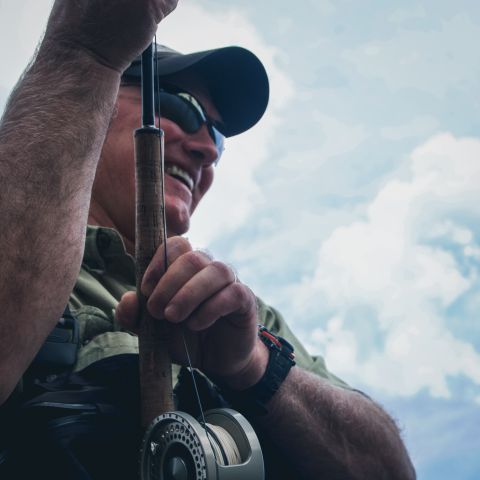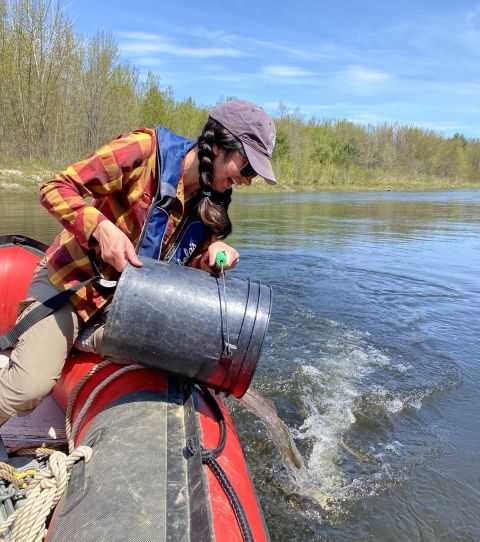
Subscribe & stay up-to-date with ASF

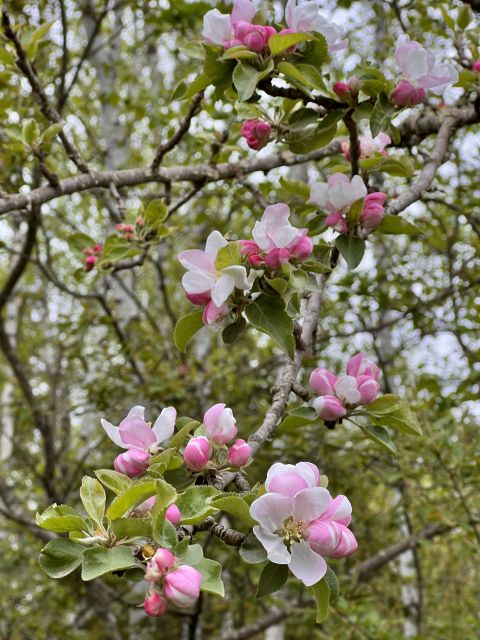
The past two weeks on the St. Mary’s River have been magical: cool misty mornings and many sunny, mild afternoons. Wading is no longer a silent activity as I happily chatter to my son, pointing out the different trout snacks we see—mayflies drifting on the water’s surface, golden shiners darting along the river bottom and caddis pupae emerging from their intricate tubular casings.
Clusters of wild strawberry blooms, dainty bluets and purple violets dot the riverbanks. Overhead we spotted and stopped to take in the heady fragrance of an early apple blossom. And just this weekend, we encountered our first wood turtle of the season.
When there’s not a breeze, a bug net is now a necessity in Sherbrooke with the black flies out in full force. Water levels here are quite low for May and sadly, the forecasted rain continues to vanish.
The two spring tagging studies have wrapped up and DFO Biologist, David Hardie, shared: “Working with the St. Mary’s River Association (SMRA), we were able to tag 24 kelts in April (15 acoustic, 14 satellite, 5 of which were double-tagged). And we have just finished tagging 260 smolts.” These studies are a highlight for the SMRA, and members excitedly await DFO’s presentation at their upcoming AGM this Sunday.
ASF’s Graham Chafe returned May 15th from spending six productive days in the Miramichi area, tagging and deploying remaining receivers. Graham shares the following from his field work:
– 80 smolt were tagged on the SW Miramichi at Rocky Brook camp. Every year the staff there house and feed us as well as operate the smolt wheel in Rocky Brook, just above where it enters the main SW Miramichi.
– 40 smolt were tagged on the NW Miramichi at Wayerton Bridge. We have tagged here for many years as well, though the smolt wheel was moved a few kms from a handful of years ago. Lyndsay at the Miramichi Salmon Association and her summer staff operate the wheel, and help us by putting aside smolt of appropriate size (anything above 13cm) for tagging. – Katie, Kayla and Tara from Anqotum are partners on the project as well now and they have been a huge help. They helped deploy receivers two weeks ago and tagged half of the fish (20) since the runs on the NW and SW peaked on the same days and I had to run down to the SW to tag.
– In addition, I put out the last receivers as follows:
– One receiver about 8 km downstream of Rocky Brook, with the help of Jerry Price who works at RB and operates the wheel there.
– Two at Black Brook Salmon Lodge near Blackville, with the help of Eddie Colford, who helps every year. He runs me out in his boat to deploy and recover (in a month or so).
– Two at what we call SW Miramichi 1, which is in Boiestown, just in front of Vince Swayze’s home on the river. Vince assists every year in the deployment and recovery and let’s me take his boat. A strong salmon advocate and an invaluable asset to our field work.
– The Ledges Camp in Doaktown also lets me use a boat twice a year to deploy and recover.
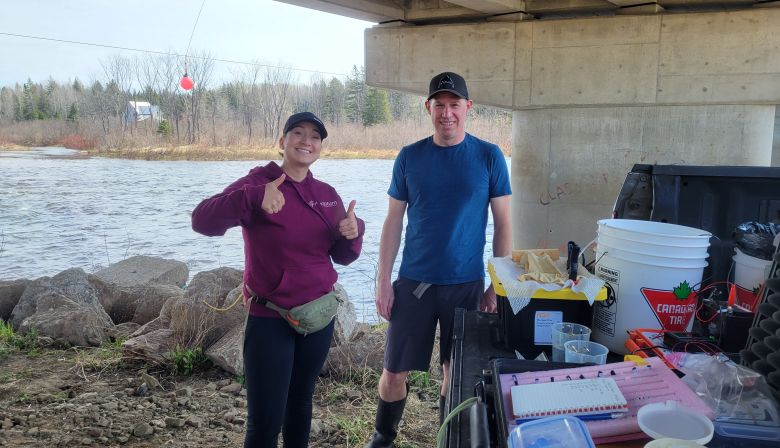
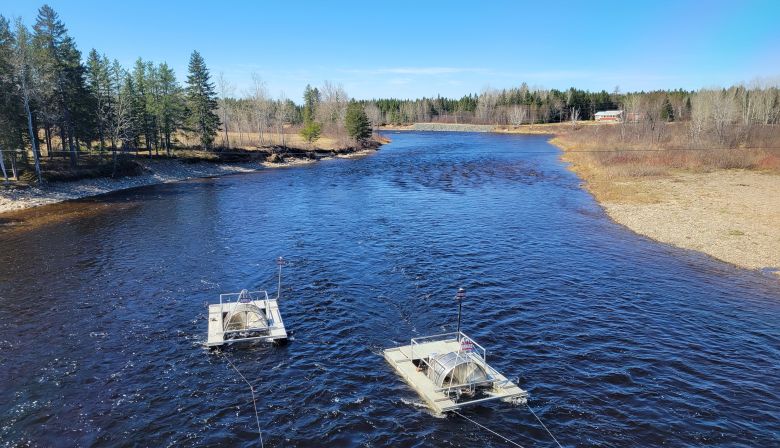
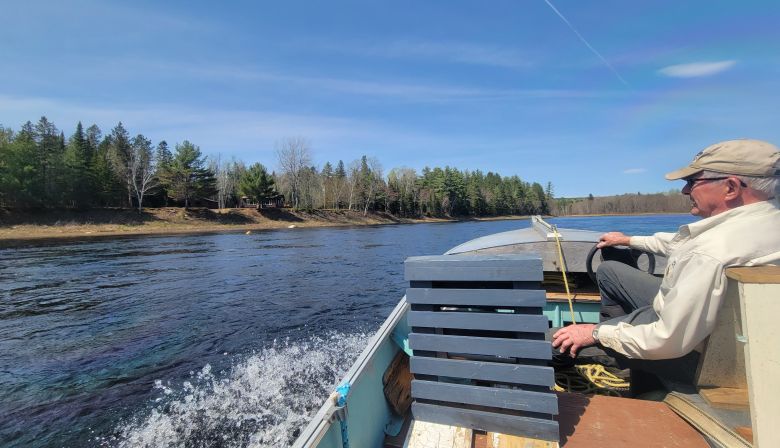
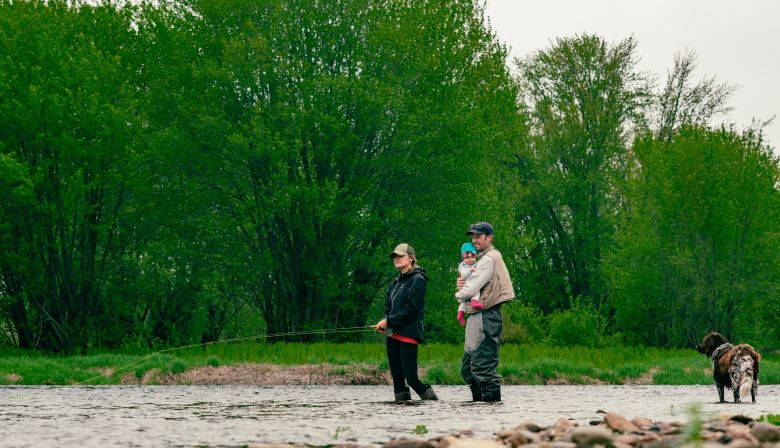
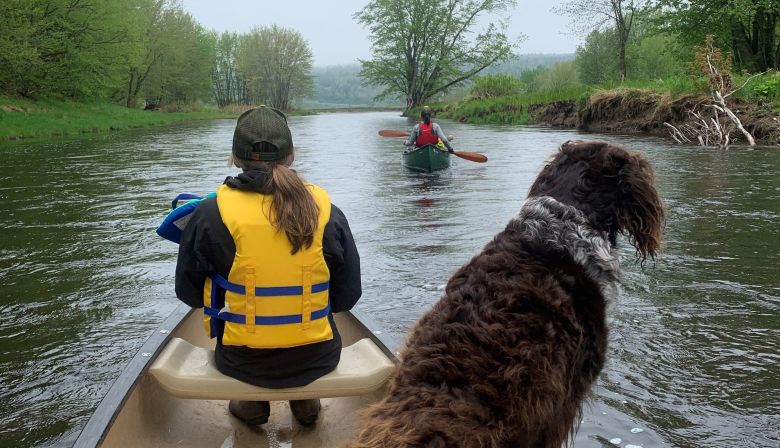
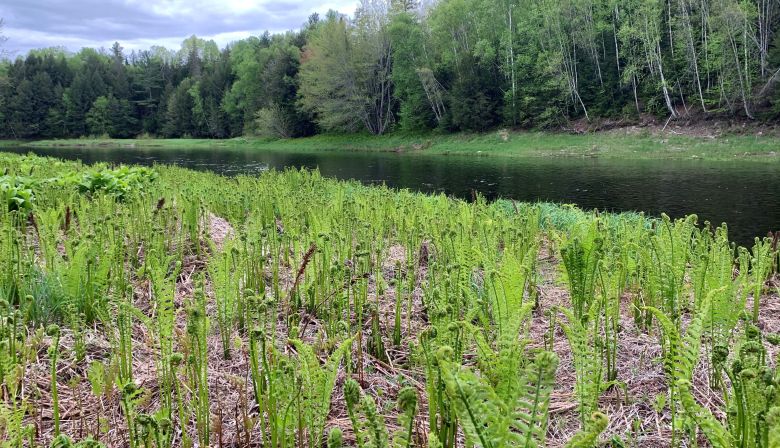
A report from Colin Gilks, Chief Guide, Miramichi Salmon Club: What a start to this season! I have been a guide and fisherman since an early age, following my father and family who have had a long history of outfitters and guides on the main Southwest Miramichi.
Thunderstorms and heavy rain kept me and my fiancé off the river until early evening. We debated about going fishing for some sea run brook trout, but once it cleared, the water was magical with fog and the warmth of spring. We decided to give it a try, or at least some serenity on the water.
Trying one spot first with no luck, we just enjoyed floating down the river and the beautiful views the Miramichi provides. Stopping at the next fishing pool we anchored and started to fish; hoping to get a trout. Within minutes my fiancé said she saw a fish roll. I asked where and she pointed where it was. I cast a line in the direction she pointed out and nothing. With a few different fly selections, thinking it was a big trout, I used a wet and dry fly; to no avail. Then I saw the fish come up exactly where she had said. Tried a couple more flies, wet and dry, nothing. I then went to a Miramichi favourite, the “Green Machine.” First cast and the beautiful hen was on. Still thinking it was a huge trout until it made a run and jumped! Now knowing what was on the line, we maneuvered the boat downstream where the water was calmer to hopefully get it landed and released. Which in fact we did! It was a euphoric moment for both of us. Getting a quick picture and putting her back to swim away for future generations of salmon to come.
I have caught one fish in May about ten years ago, but it is quite humbling to say the least to catch one this early. Water conditions were great for boat fishing in a great temperature. I am so happy I had this experience and to be able to share it with others across our great Atlantic salmon rivers
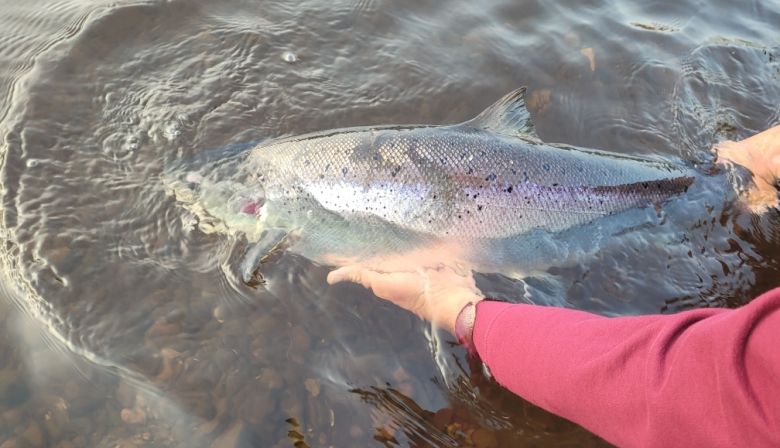
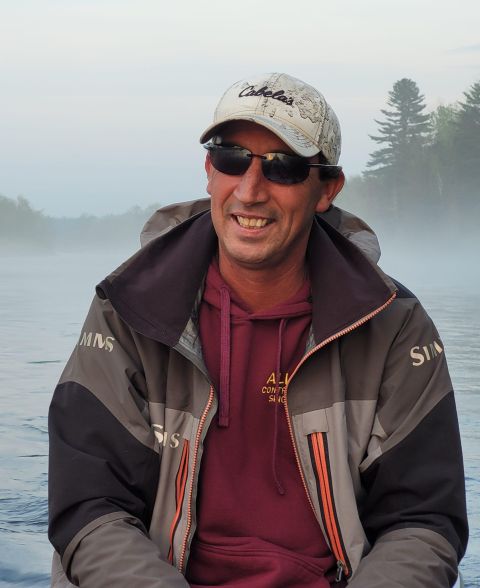
Fly fishing guide and metalsmith, Gioia Usher writes: With weather typically lagging a month or so behind the more southern parts of the province, the black flies and buds have now emerged. With spring always comes the excitement of ‘re-learning’ the river and its pools but this year shows more significant changes than in years prior. After the major rainstorm last year that wiped out bridges and roadways on the island, it’s no surprise to see its impact, specifically on the Middle and Baddeck Rivers. Some sections are unrecognizable and even re-routed entirely. With water levels still quite high, the difficult fishing has pushed us up into the tributaries and brooks of Middle River and surrounding area. We’ve been lucky to encounter brook trout and rainbows. The highlight of our season so far was this brook trout which we first spotted then patiently tricked with a stimulator.
You can learn more about Gioia Usher, her handcrafted jewelry and the work she is doing to break down barriers for women in fly-fishing at www.metalandmayflies.com and on Instagram @metalandmayflies.
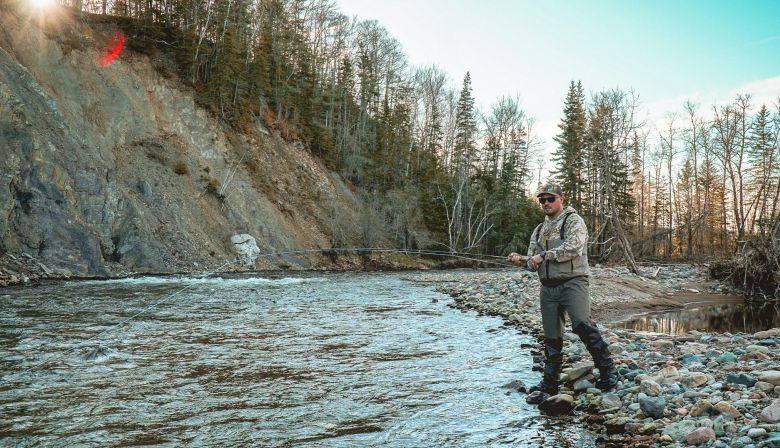

Angler & Elementary school teacher, Stefan Sears, spent a few days last week exploring the St. Mary’s River with friend and fishing partner, Tim Myers. Stefan writes:
The trout fishing on the St. Mary’s was excellent this week. Black flies were plentiful, as were aggressive, sea-run (and resident) brook trout. Muddler Minnows and hair-wing streamers produced several healthy trout. The water level was low, but still cold due to cool overnight temperatures.
The fishing was good in most of the deep pools on the main branch of the river. And the abundance of animal and plant life in and around the watershed was very impressive. It amazes me that anyone would consider this majestic river as a good place for a gold mine. I expect the fishing should get even better with the next bump of rain.
You can follow Stefan’s fishing adventures on Instagram @ssearsy.
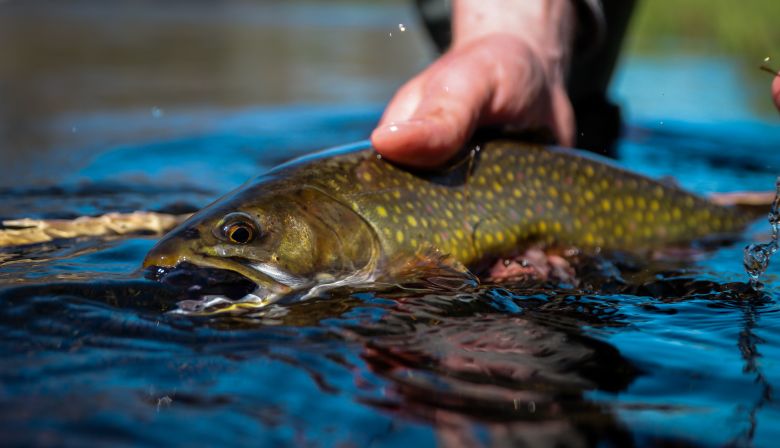

DMR’s Colby Bruchs writes: Cooler weather returned over the past week. The smolt run on the Narraguagus is nearing its end with trap removal at Route 9 slated for mid-week. The Sandy run is tailing off but surpassed last year’s total catch this week! See attached site summaries.
The Narraguagus River fishway trap was installed on 26 April at the Stillwater Dam in Cherryfield, Maine. The 2022 trapping season has been off to a slow start for Atlantic Salmon with no returns to report to date. As a reminder, our trap does not retain River Herring and small (<40cm FL) American Shad. The trap does retain larger shad allowing us to obtain an index of repeat spawners returning to the river annually. To date, we have captured 268 American Shad.
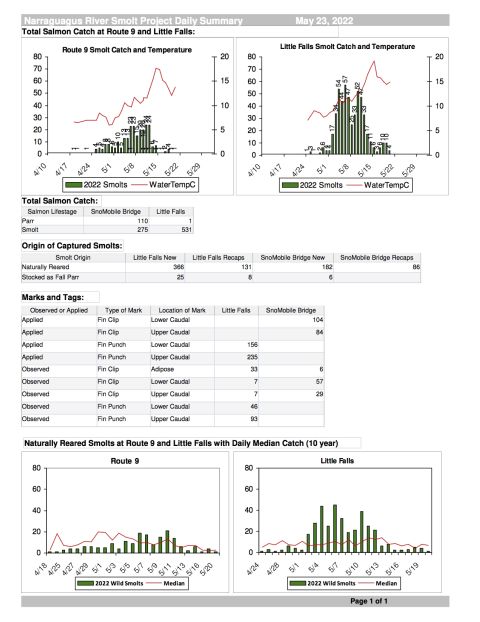

ASF’s Maine Headwaters Project Manager, Maranda Nemeth, says: The migratory fish ramped up in the last week with sea-run fish on the move and we are hearing reports of great American shad fishing in the lower Kennebec River.
Herb Hartman of the ASF Maine Council snagged a 5-pound shad in Winslow, noting he caught 2 fish in just 4 casts of his fly rod. In addition, Trout Unlimited hosted an event on Saturday encouraging folks to get out on the river.
With partners, we have restored fish passage to thousands of acres for alewife to reproduce and now, alewife number in the millions across the rivers in Maine. Alewives are so numerous they can be easily hand caught right out of water as Mike Kinnison’s son demonstrates on Bradley Stream outside Bangor (photo below). Alewives are critically important to the survival of Atlantic salmon since the millions of fish provide predatory buffer to the out-migrating smolts and in-migrating adults.
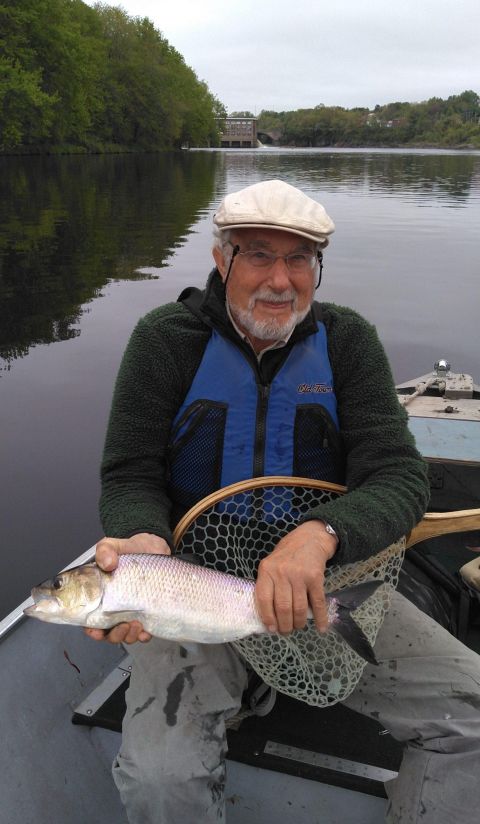
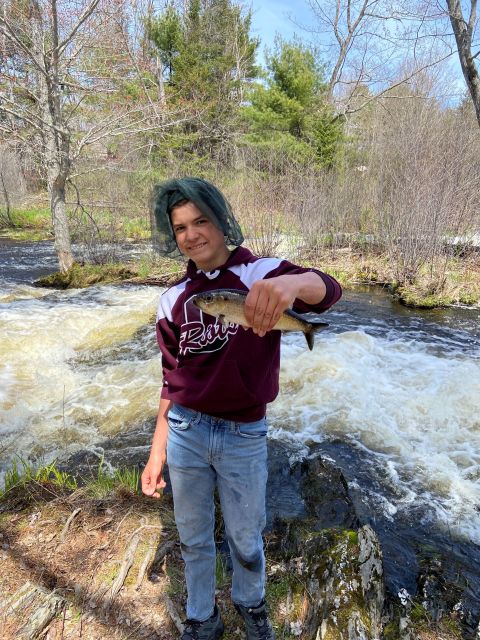
The following images and captions, supplied by Maranda Nemeth, summarize some of our recent field work:
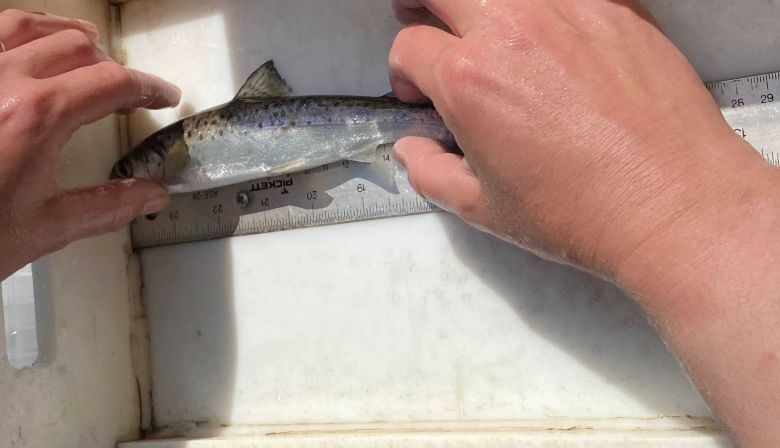
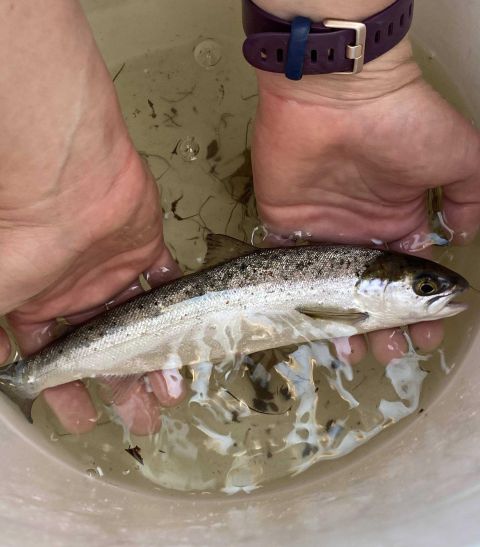
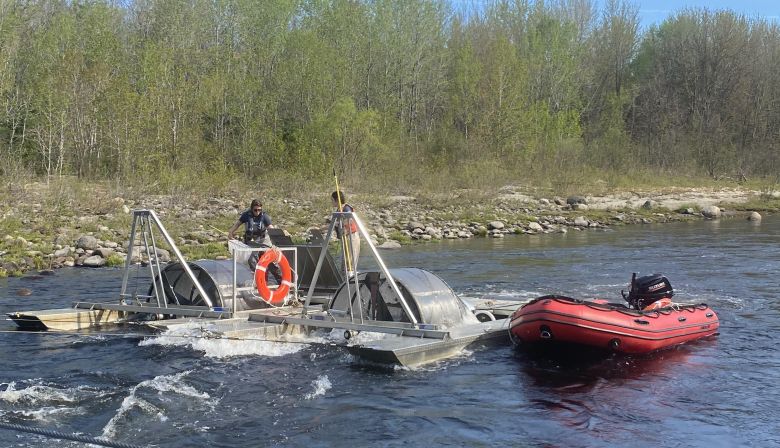

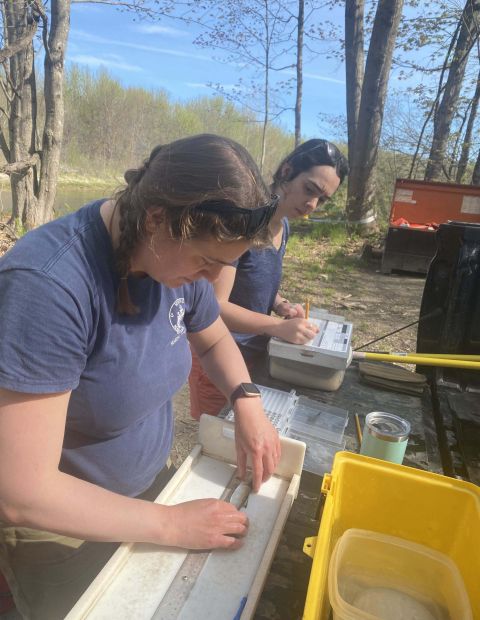
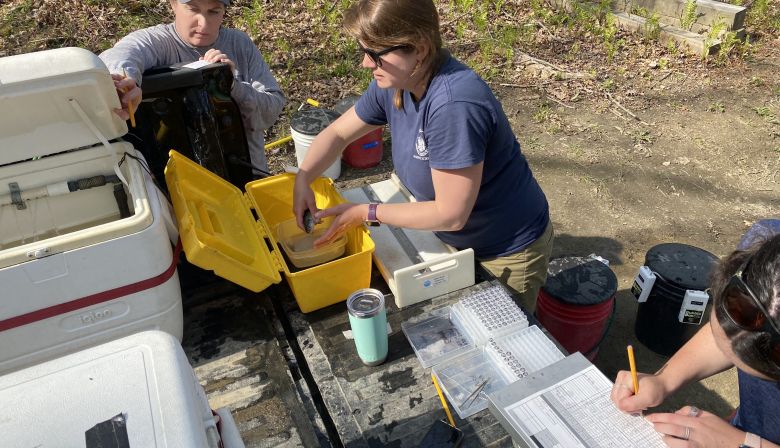

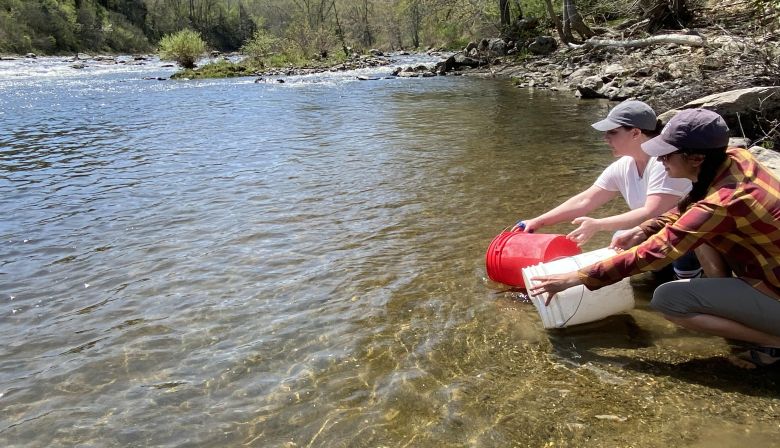

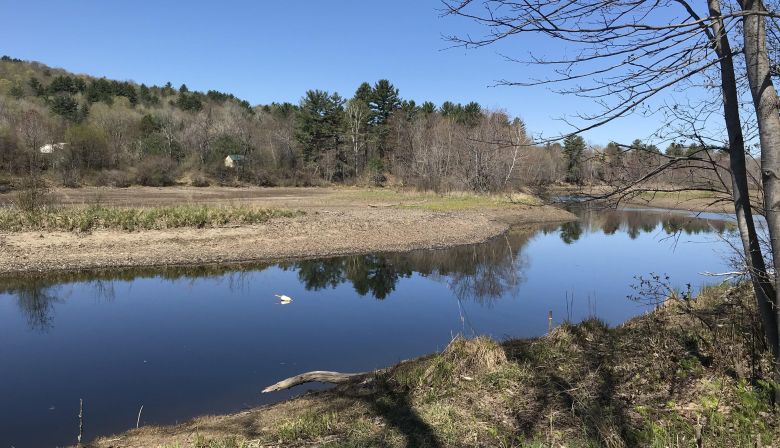
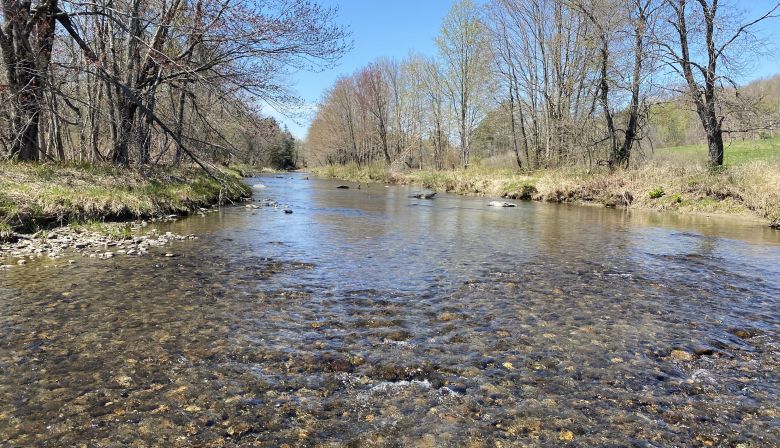
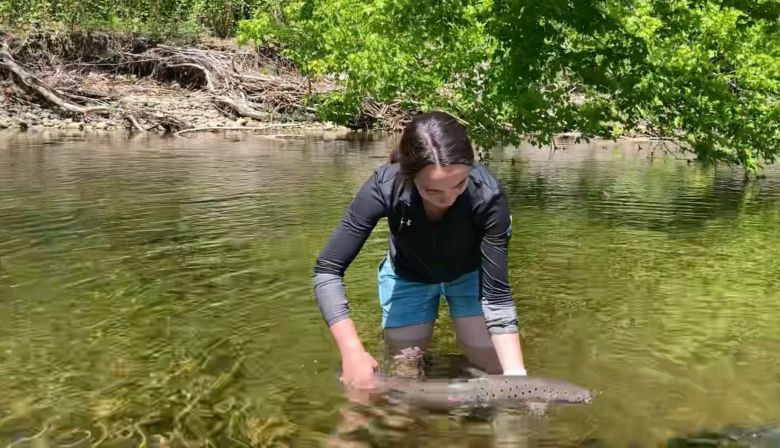
Fundraising dinners in Montreal and St. Andrews were an outstanding success with close to $250,000 raised. The common sentiment among guests was how great it was to be back together in-person after a two-year hiatus.
In downtown Montreal at the Windsor Hotel, the Paddle Raise resulted in an astounding $40,000 raised. In St. Andrews, an inspiring keynote speech was delivered by Nick Hawkins.
ASF wants to take this opportunity to extend our sincere appreciation to all who attended and who work tirelessly to make these events so meaningful. Thank you.






A kinder, more generous man you’ll be hard pressed to find. Bob MacDonald began his fly tying career over forty years ago in Mulgrave, Nova Scotia. Coming from a family with strong fly fishing roots, Bob’s natural talents were sharpened through lessons with his Uncle Len B. MacDonald, a long-time tier himself. Through these lessons, Bob met his mentor and best friend, the late Leonard J. Macdonald “Lenny”. Bob credits much of his skill as an angler and fly tier to Lenny.
Throughout the years, Bob’s tying has been featured in magazines and a collection of books. He has tied at numerous fly fishing shows and was an ASFI Exhibitor in 2017. His flies are found in fly boxes worldwide and are carefully crafted to seduce Atlantic salmon, trophy brown trout, stripers, tarpon, and much more.
Bob’s generous nature combined with his passion for the sport has been felt by many within our community. Despite working long hours, and filling hundreds of fly orders annually, Bob spends a great deal of his time tutoring novice fly tiers and fostering their passion and budding talent. He has an innate ability to simplify the complexities of classic salmon fly tying and with that has drawn many to this rewarding hobby.
You can follow Bob on Instagram @donaldbobmac. Happy tying!
